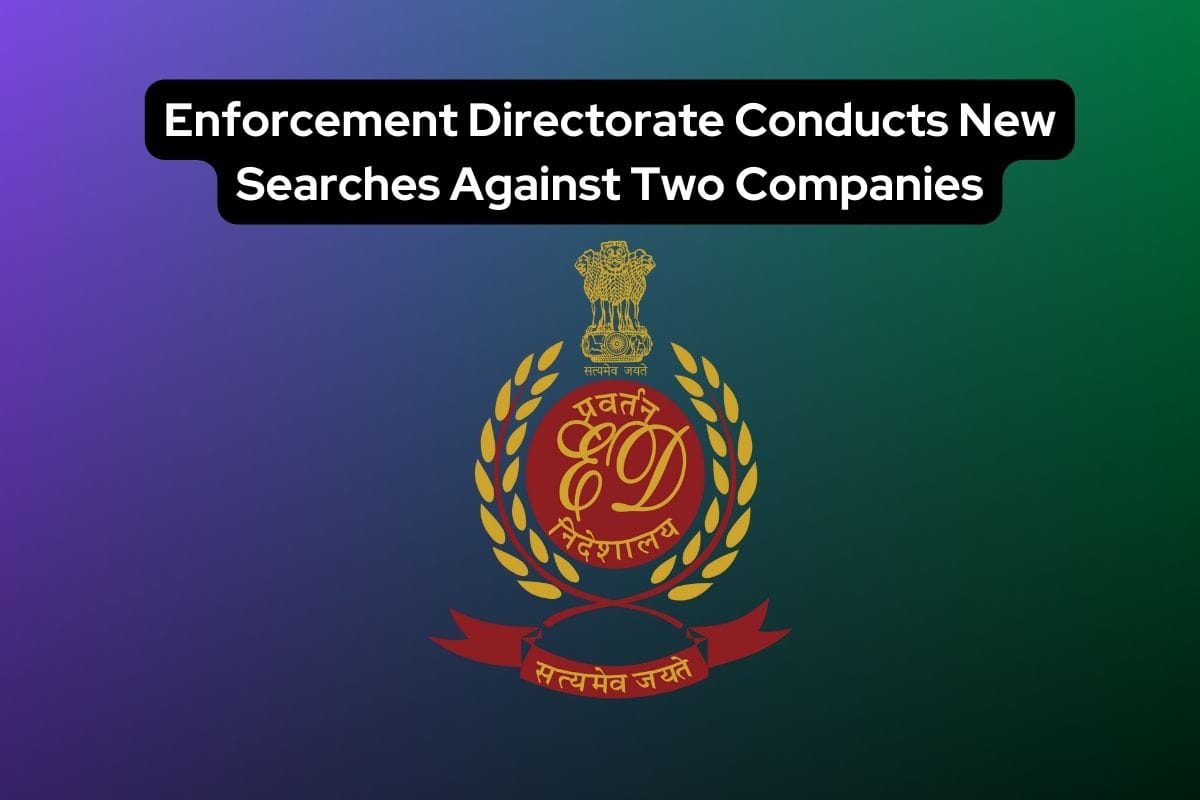
Latest Current Affairs – The Enforcement Directorate (ED) recently conducted new searches against two companies and individuals connected to them as part of an investigation into money laundering involving Chinese nationals. These companies are accused of lending money through mobile phone apps and then harassing borrowers by accessing their personal information.
The searches took place on December 21 last year in various locations, including Delhi-NCR, Chandigarh, Haryana, Punjab, and Gujarat. The targeted companies, Shinebay Technology India Private Limited (STIPL) and Mpurse Services Private Limited (MSPL), are owned and controlled by Chinese nationals.
The ED recovered and seized cash amounting to 1.30 crore rupees during the search operations. The investigation was initiated based on FIRs filed against several companies and individuals in Bengaluru, Kazipet, and Jangaon for charging excessively high interest rates on loans and harassing customers through threats and abuse over the phone.
Unauthorized access to personal information, including circulating manipulated photographs of borrowers and their families, was also part of the allegations.
About ED
The Enforcement Directorate (ED) in India traces its history to the aftermath of the economic reforms initiated in the early 1990s. Its establishment is closely linked to the need for a specialized agency to enforce economic laws and regulations, particularly in the context of money laundering and foreign exchange violations.
Here is an overview of the history of the Enforcement Directorate:
1. Formation and Early Years:
The ED was formally established in 1956, under the Directorate of Revenue Intelligence (DRI).
Initially, its focus was on combating economic crimes related to smuggling and customs violations.
2. Evolution in the 1990s:
The economic liberalization policies of the early 1990s brought about significant changes in India’s economic landscape.
With the opening up of the economy, there was a growing need for a specialized agency to address emerging challenges related to money laundering and financial offenses.
3. Empowerment through Legislative Framework:
The Prevention of Money Laundering Act (PMLA) was enacted in 2002, providing a legal framework for the functioning of the ED.
The PMLA gave the ED specific powers to investigate and prosecute cases of money laundering.
4. Focus on Money Laundering and FEMA:
Over the years, the ED’s mandate evolved to primarily focus on cases related to money laundering and violations of the Foreign Exchange Management Act (FEMA).
5. International Cooperation:
As financial crimes often have international dimensions, the ED actively engaged in collaborations with international agencies to address cross-border money laundering issues.
6. High-Profile Cases:
The ED became involved in several high-profile cases involving financial frauds, corruption, and economic offenses.
Its role expanded beyond routine investigations to include complex cases with national and international ramifications.
7. Amendments and Strengthening:
The PMLA underwent amendments to strengthen the legal framework and enhance the ED’s powers.
These amendments aimed at providing the ED with more tools to combat money laundering effectively.
8. Role in National Security:
The ED’s work became increasingly linked to national security as it played a crucial role in investigating financial links to terrorism and other threats.
9. Continuing Relevance
In recent years, the ED continues to be a significant player in enforcing economic laws and regulations in India. It remains at the forefront of tackling money laundering, financial crimes, and ensuring compliance with FEMA.
Important Questions For Exams
- What is the Enforcement Directorate (ED), and what is its primary mandate in India?
- Briefly explain the historical evolution of the Enforcement Directorate and its role in enforcing economic laws.
- How does the ED contribute to the prevention of money laundering in India?
- Describe the legal framework under which the Enforcement Directorate operates, particularly mentioning the key legislation.
- Highlight the major functions and responsibilities of the Enforcement Directorate.
- What is the Prevention of Money Laundering Act (PMLA), and how does it empower the Enforcement Directorate?
- Discuss the amendments made to the PMLA over the years and their significance in enhancing the ED’s capabilities.
- Explain the role of the Enforcement Directorate in investigating cases related to the Foreign Exchange Management Act (FEMA).
- How does the ED collaborate with international agencies in addressing cross-border financial crimes?
- Discuss the preventive measures undertaken by the ED to curb money laundering and financial crimes.
- Elaborate on the ED’s role in investigating and prosecuting cases related to money laundering, providing examples if possible.
- How does the Enforcement Directorate contribute to national security through its financial investigations?


Leave a Reply